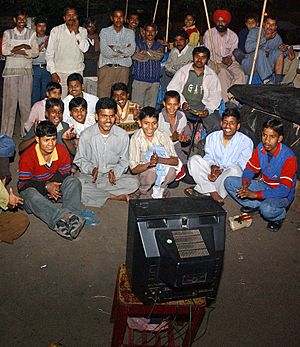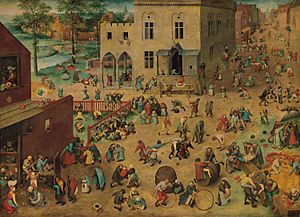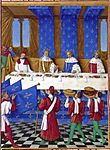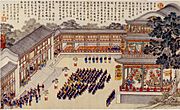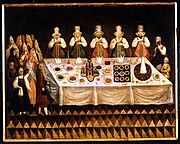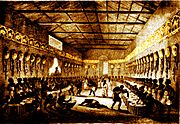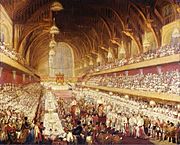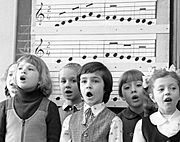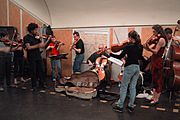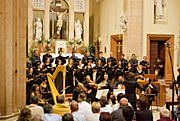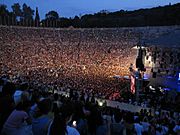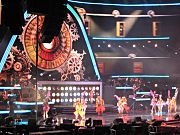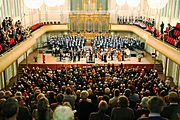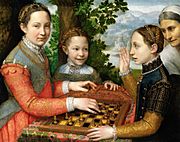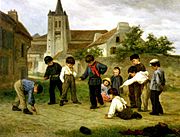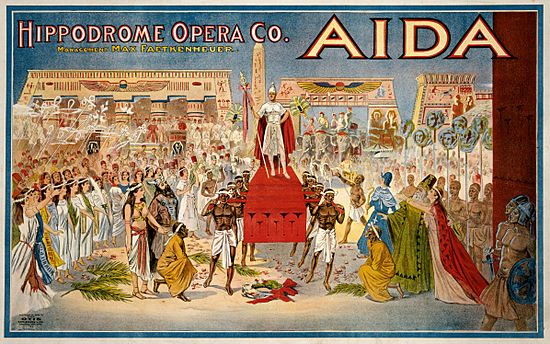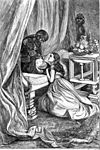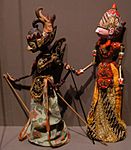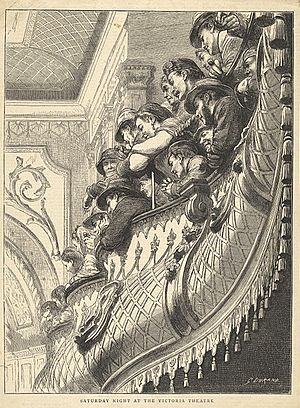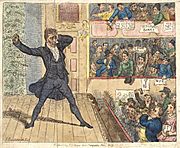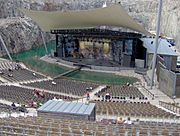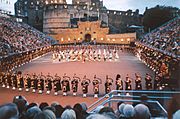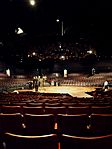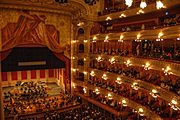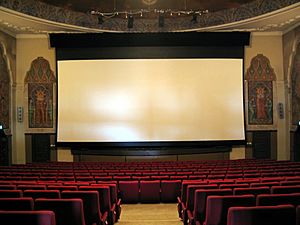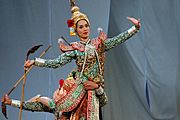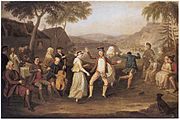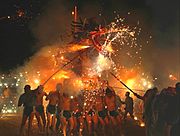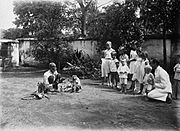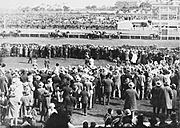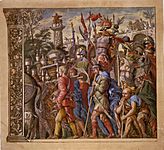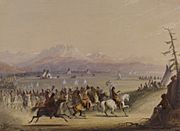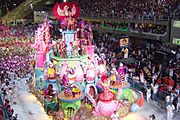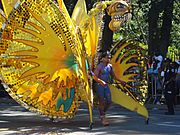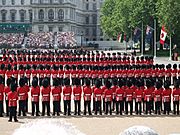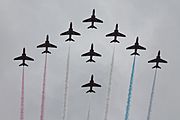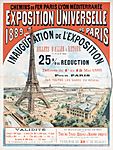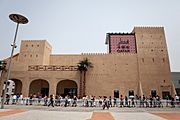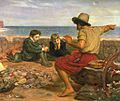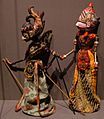Entertainment facts for kids
Entertainment is a form of activity that holds the attention and interest of an audience, or gives pleasure and delight. It can be an idea or a task, but is more likely to be one of the activities or events that have developed over thousands of years specifically for the purpose of keeping an audience's attention. Although people's attention is held by different things, because individuals have different preferences in entertainment, most forms are recognisable and familiar. Storytelling, music, drama, dance, and different kinds of performance exist in all cultures, were supported in royal courts, developed into sophisticated forms and over time became available to all citizens. The process has been accelerated in modern times by an entertainment industry that records and sells entertainment products.
The experience of being entertained has come to be strongly associated with amusement, so that one common understanding of the idea is fun and laughter, although many entertainments have a serious purpose. This may be the case in the various forms of ceremony, celebration, religious festival, or satire for example. Hence, there is the possibility that what appears as entertainment may also be a means of achieving insight or intellectual growth.
An important aspect of entertainment is the audience, which turns a private recreation or leisure activity into entertainment. The audience may have a passive role, as in the case of persons watching a play, opera, television show, or film; or the audience role may be active, as in the case of games, where the participant/audience roles may be routinely reversed. Entertainment can be public or private, involving formal, scripted performance, as in the case of theatre or concerts; or unscripted and spontaneous, as in the case of children's games. Most forms of entertainment have persisted over many centuries, evolving due to changes in culture, technology, and fashion. Films and video games, for example, although they use newer media, continue to tell stories, present drama, and play music. Festivals devoted to music, film, or dance allow audiences to be entertained over a number of consecutive days.
Contents
Children
Children's entertainment is centred on play and is significant for their growth and learning. Entertainment is also provided to children or taught to them by adults and many activities that appeal to them such as puppets, clowns, pantomimes and cartoons are also enjoyed by adults.
Children have always played games. It is accepted that as well as being entertaining, playing games helps children's development. One of the most famous visual accounts of children's games is a painting by Pieter Bruegel the Elder called Children's Games, painted in 1560. It depicts children playing a range of games that presumably were typical of the time. Many of these games, such as marbles, hide-and-seek, blowing soap bubbles and piggyback riding continue to be played.
Most forms of entertainment can be or are modified to suit children's needs and interests. During the 20th century, starting with the often criticised but nonetheless important work of G. Stanley Hall, who "promoted the link between the study of development and the 'new' laboratory psychology", and especially with the work of Jean Piaget, who "saw cognitive development as being analogous to biological development", it became understood that the psychological development of children occurs in stages and that their capacities differ from adults. Hence, stories and activities, whether in books, film, or video games were developed specifically for child audiences. Countries have responded to the special needs of children and the rise of digital entertainment by developing systems such as television content rating systems, to guide the public and the entertainment industry.
In the 21st century, much entertainment is available for children on the internet for private use.
Types of Entertainment
Reading
Reading has been a source of entertainment for a very long time
Among literature's many genres are some designed, in whole or in part, purely for entertainment. Limericks, for example, use verse in a strict, predictable rhyme and rhythm to create humour and to amuse an audience of listeners or readers. Interactive books such as "choose your own adventure" can make literary entertainment more participatory.
Comics and cartoons are literary genres that use drawings or graphics, usually in combination with text, to convey an entertaining narrative. Many contemporary comics have elements of fantasy and are produced by companies that are part of the entertainment industry.
Banquets
Banquets have been a venue for entertainment since ancient times, continuing until the 21st century, when they are still being used for many of their original purposes – to impress visitors, especially important ones (4, 6, 9); to show hospitality (2, 4, 8); as an occasion to showcase supporting entertainments such as music or dancing, or both (2, 3). They were an integral part of court entertainments (3, 4) and helped entertainers develop their skills (2, 3). They are also important components of celebrations such as coronations (9), weddings (7), birthdays (10) civic or political achievements (5), military engagements or victories (6) as well as religious obligations (1). In modern times, banquets are commercially available, for example, in restaurants (10) and combined with a performance in dinner theatres. Cooking by professional chefs has also become a form of entertainment as part of global competitions such as the Bocuse d'Or.
- Banquets across 10 centuries and cultures
-
1 A banquet scene from Ancient Egypt (from a wall painting in Thebes)
-
2 Byzantine banquet showing musicians and various musical instruments (1204–1453)
-
3 Jean Fouquet, Banquet for Charles V of France (1455–1460)
-
4 A banquet including roast goose given for Babur by the Mirzas in 1507 (miniature c. 1590)
-
5 Bartholomeus van der Helst, Peace of Münster
Amsterdam (1648) -
8 The banquet hall in the palace of King Sahle Selassie painting from a photo, Ethiopia (1852)
-
9 Coronation banquet of George IV in Westminster Hall (1821)
-
10 Chinese banquet in a banquet hall given as a birthday celebration (2012)
Music
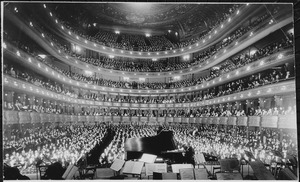
Music is a supporting component of many kinds of entertainment and most kinds of performance. For example, it is used to enhance storytelling, it is indispensable in dance (1, 4) and opera, and is usually incorporated into dramatic film or theatre productions.
Music is also a universal and popular type of entertainment on its own, constituting an entire performance such as when concerts are given (2, 4, 5, 6, 7, 8, 9 ). Depending on the rhythm, instrument, performance and style, music is divided into many genres, such as classical, jazz, folk, (4, 5, 8), rock, pop music (6, 9) or traditional (1, 3). Since the 20th century, performed music, once available only to those who could pay for the performers, has been available cheaply to individuals by the entertainment industry, which broadcasts it or pre-records it for sale.
The wide variety of musical performances, whether or not they are artificially amplified (6, 7, 9, 10), all provide entertainment irrespective of whether the performance is from soloists (6), choral (2) or orchestral groups (5, 8), or ensemble (3). Live performances use specialised venues, which might be small or large; indoors or outdoors; free or expensive. The audiences have different expectations of the performers as well as of their own role in the performance. For example, some audiences expect to listen silently and are entertained by the excellence of the music, its rendition or its interpretation (5, 8). Other audiences of live performances are entertained by the ambience and the chance to participate (7, 9). Even more listeners are entertained by pre-recorded music and listen privately (10).
The instruments used in musical entertainment are either solely the human voice (2, 6) or solely instrumental (1, 3) or some combination of the two (4, 5, 7, 8). Whether the performance is given by vocalists or instrumentalists, the performers may be soloists or part of a small or large group, in turn entertaining an audience that might be individual (10), passing by (3), small (1, 2) or large (6, 7, 8, 9). Singing is generally accompanied by instruments although some forms, notably a cappella and overtone singing, are unaccompanied. Modern concerts often use various special effects and other theatrics to accompany performances of singing and dancing (7).
- Musical entertainment – 10 types of audience engagement
-
3 Ensemble entertains travellers in the Paris Métro (2002)
-
5 Choir and orchestra in ecclesiastical setting (Italy, 2008)
Games
Games are played for entertainment—sometimes purely for entertainment, sometimes for achievement or reward as well. They can be played alone, in teams, or online; by amateurs or by professionals. The players may have an audience of non-players, such as when people are entertained by watching a chess championship. On the other hand, players in a game may constitute their own audience as they take their turn to play. Often, part of the entertainment for children playing a game is deciding who is part of their audience and who is a player.
Equipment varies with the game. Board games, such as Go, Monopoly or backgammon need a board and markers. One of the oldest known board games is Senet, a game played in Ancient Egypt, enjoyed by the pharaoh Tutankhamun. Card games, such as whist, poker and Bridge have long been played as evening entertainment among friends. For these games, all that is needed is a deck of playing cards. Other games, such as bingo, played with numerous strangers, have been organised to involve the participation of non-players via gambling. Many are geared for children, and can be played outdoors, including hopscotch, hide and seek, or Blind man's bluff. The list of ball games is quite extensive. It includes, for example, croquet, lawn bowling and paintball as well as many sports using various forms of balls. The options cater to a wide range of skill and fitness levels. Physical games can develop agility and competence in motor skills. Number games such as Sudoku and puzzle games like the Rubik's cube can develop mental prowess.
Video games are played using a controller to create results on a screen. They can also be played online with participants joining in remotely. In the second half of the 20th century and in the 21st century the number of such games increased enormously, providing a wide variety of entertainment to players around the world. Video games are popular in East Asian countries such as South Korea.
- Games
-
Sofonisba Anguissola
The Chess Game (1555)
An intellectual game -
Théophile Emmanuel Duverger (before 1901) Hopscotch
A physical game -
Televised match of StarCraft (2006) South Korea
An electronic game
Performance
Live performances before an audience constitute a major form of entertainment, especially before the invention of audio and video recording. Performance takes a wide range of forms, including theatre, music and drama. In the 16th and 17th centuries, European royal courts presented masques that were complex theatrical entertainments involving dancing, singing and acting. Opera is a similarly demanding performance style that remains popular. It also encompass all three forms, demanding a high level of musical and dramatic skill, collaboration and like the masque, production expertise as well.
Audiences generally show their appreciation of an entertaining performance with applause. However, all performers run the risk of failing to hold their audience's attention and thus, failing to entertain. Audience dissatisfaction is often brutally honest and direct.
Storytelling
Storytelling is an ancient form of entertainment that has influenced almost all other forms. It is "not only entertainment, it is also thinking through human conflicts and contradictions". Hence, although stories may be delivered directly to a small listening audience, they are also presented as entertainment and used as a component of any piece that relies on a narrative, such as film, drama, ballet, and opera. Written stories have been enhanced by illustrations, often to a very high artistic standard, for example, on illuminated manuscripts and on ancient scrolls such as Japanese ones. Stories remain a common way of entertaining a group that is on a journey. Showing how stories are used to pass the time and entertain an audience of travellers, Chaucer used pilgrims in his literary work The Canterbury Tales in the 14th century, as did Wu Cheng'en in the 16th century in Journey to the West. Even though journeys can now be completed much faster, stories are still told to passengers en route in cars and aeroplanes either orally or delivered by some form of technology.
The power of stories to entertain is evident in one of the most famous ones—Scheherazade—a story in the Persian professional storytelling tradition, of a woman who saves her own life by telling stories. The connections between the different types of entertainment are shown by the way that stories like this inspire a retelling in another medium, such as music, film or games. For example, composers Rimsky-Korsakov, Ravel and Szymanowski have each been inspired by the Scheherazade story and turned it into an orchestral work; director Pasolini made a film adaptation; and there is an innovative video game based on the tale. Stories may be told wordlessly, in music, dance or puppetry for example, such as in the Javanese tradition of wayang, in which the performance is accompanied by a gamelan orchestra or the similarly traditional Punch and Judy show.
Epic narratives, poems, sagas and allegories from all cultures tell such gripping tales that they have inspired countless other stories in all forms of entertainment. Examples include the Hindu Ramayana and Mahabharata; Homer's Odyssey and Iliad; the first Arabic novel Hayy ibn Yaqdhan; the Persian epic Shahnameh; the Sagas of Icelanders and the celebrated Tale of the Genji. Collections of stories, such as Grimms' Fairy Tales or those by Hans Christian Andersen, have been similarly influential. Originally published in the early 19th century, this collection of folk stories significantly influence modern popular culture, which subsequently used its themes, images, symbols, and structural elements to create new entertainment forms.
Some of the most powerful and long-lasting stories are the foundation stories, also called origin or creation myths such as the Dreamtime myths of the Australian aborigines, the Mesopotamian Epic of Gilgamesh, or the Hawaiian stories of the origin of the world. These too are developed into books, films, music and games in a way that increases their longevity and enhances their entertainment value.
- Telling stories
-
William Blake's painting of the pilgrims in The Canterbury Tales
-
Scheherazade telling her stories to King Shahryar in The Arabian Nights
-
Telling stories via Wayang golek puppets in Java
-
Tosa Mitsuoki illustrating her Tale of Genji
Theatre
Theatre performances, typically dramatic or musical, are presented on a stage for an audience and have a history that goes back to Hellenistic times when "leading musicians and actors" performed widely at "poetical competitions", for example at "Delphi, Delos, Ephesus". Aristotle and his teacher Plato both wrote on the theory and purpose of theatre. The "Ptolemys in Egypt, the Seleucids in Pergamum" also had a strong theatrical tradition and later, wealthy patrons in Rome staged "far more lavish productions".
Plays, musicals, monologues, pantomimes, and performance poetry are part of the very long history of theatre, which is also the venue for the type of performance known as stand-up comedy. In the 20th century, radio and television, often broadcast live, extended the theatrical tradition that continued to exist alongside the new forms.
The stage and the spaces set out in front of it for an audience create a theatre. All types of stage are used with all types of seating for the audience, including the impromptu or improvised (2, 3, 6); the temporary (2); the elaborate (9); or the traditional and permanent (5, 7). They are erected indoors (3, 5, 9) or outdoors (2, 4, 6). The skill of managing, organising and preparing the stage for a performance is known as stagecraft (10). The audience's experience of the entertainment is affected by their expectations, the stagecraft, the type of stage, and the type and standard of seating provided.
- Theatrical entertainment – stages, staging and stagecraft
-
6 Outdoor theatre created from Edinburgh castle forecourt
-
7 Traditional stage for Japanese Noh theatre
-
9 Teatro Colón, a highly decorative, horseshoe theatre
Cinema and film
In 1908, Pathé launched and distributed newsreels and by World War I, films were meeting an enormous need for mass entertainment.
Film became a part of the entertainment industry from its early days. Increasingly sophisticated techniques have been used in the film medium to delight and entertain audiences. Animation, for example, which involves the display of rapid movement in an art work, is one of these techniques that particularly appeals to younger audiences. The advent of computer-generated imagery (CGI) in the 21st century made it "possible to do spectacle" more cheaply and "on a scale never dreamed of" by Cecil B. DeMille.
From the 1930s to 1950s, movies and radio were the "only mass entertainment" but by the second decade of the 21st century, technological changes, sophisticated visual effects and CGI techniques, for example, rather than humans, were used not only to create realistic images of people, landscapes and events (both real and fantastic) but also to animate non-living items such as Lego normally used as entertainment as a game in physical form. Creators of The Lego Movie "wanted the audience to believe they were looking at actual Lego bricks on a tabletop that were shot with a real camera, not what we actually did, which was create vast environments with digital bricks inside the computer."
The convergence of computers and film has allowed entertainment to be presented in a new way and the technology has also allowed for those with the personal resources to screen films in a home theatre, recreating in a private venue the quality and experience of a public theatre. This is similar to the way that the nobility in earlier times could stage private musical performances or the use of domestic theatres in large homes to perform private plays in earlier centuries.
Films also re-imagine entertainment from other forms, turning stories, books and plays, for example, into new entertainment.
Dance
The many forms of dance provide entertainment for all age groups and cultures. Dance can be serious in tone, such as when it is used to express a culture's history or important stories; it may be provocative; or it may put in the service of comedy. Since it combines many forms of entertainment – music, movement, storytelling, theatre – it provides a good example of the various ways that these forms can be combined to create entertainment for different purposes and audiences.
Dance is "a form of cultural representation" that involves not just dancers, but "choreographers, audience members, patrons and impresarios ... coming from all over the globe and from vastly varied time periods." Whether from Africa, Asia or Europe, dance is constantly negotiating the realms of political, social, spiritual and artistic influence." Even though dance traditions may be limited to one cultural group, they all develop. For example, in Africa, there are "Dahomean dances, Hausa dances, Masai dances and so forth." Ballet is an example of a highly developed Western form of dance that moved to the theatres from the French court during the time of Louis XIV, the dancers becoming professional theatrical performers. Some dances, such as the quadrille, a square dance that "emerged during the Napoleonic years in France" and other country dances were once popular at social gatherings like balls, but are now rarely performed. On the other hand, many folk dances (such as Scottish Highland dancing and Irish dancing), have evolved into competitions, which by adding to their audiences, has increased their entertainment value. "Irish dance theatre, which sometimes features traditional Irish steps and music, has developed into a major dance form with an international reputation."
Dances can be performed solo (1, 4); in pairs, (2, 3); in groups, (5, 6, 7); or by massed performers (10). They might be improvised (4, 8) or highly choreographed (1, 2, 5, 10); spontaneous for personal entertainment, (such as when children begin dancing for themselves); a private audience, (4); a paying audience (2); a world audience (10); or an audience interested in a particular dance genre (3, 5). They might be a part of a celebration, such as a wedding or New Year (6, 8); or a cultural ritual with a specific purpose, such as a dance by warriors like a haka (7). Some dances, such as traditional dance in 1 and ballet in 2, need a very high level of skill and training; others, such as the can-can, require a very high level of energy and physical fitness. Entertaining the audience is a normal part of dance but its physicality often also produces joy for the dancers themselves (9).
- Dance – 10 types across 10 cultures
-
3 Ballroom dancing (Czech Republic)
-
4 Belly dancer (Morocco)
-
5 Morris dancing (England)
-
6 Highland wedding (Scotland, 1780)
-
8 Fire Dragon dance for Chinese New Year
-
9 Bhangra dancers at the International Children's Festival
Animals
Animals have been used for the purposes of entertainment for millennia. They have been hunted for entertainment (as opposed to hunted for food); displayed while they hunt for prey; watched when they compete with each other; and watched while they perform a trained routine for human amusement. The Romans, for example, were entertained both by competitions involving wild animals and acts performed by trained animals. They watched as "lions and bears danced to the music of pipes and cymbals; horses were trained to kneel, bow, dance and prance ... acrobats turning handsprings over wild lions and vaulting over wild leopards." There were "violent confrontations with wild beasts" and "performances over time became more brutal and bloodier".
Animals that perform trained routines or "acts" for human entertainment include fleas in flea circuses, dolphins in dolphinaria, and monkeys doing tricks for an audience on behalf of the player of a street organ. Animals kept in zoos in ancient times were often kept there for later use in the arena as entertainment or for their entertainment value as exotica.
Many contests between animals are now regarded as sports – for example, horse racing is regarded as both a sport and an important source of entertainment. Its economic impact means that it is also considered a global industry, one in which horses are carefully transported around the world to compete in races. In Australia, the horse race run on Melbourne Cup Day is a public holiday and the public regards the race as an important annual event. Like horse racing, camel racing requires human riders, while greyhound racing does not. People find it entertaining to watch animals race competitively, whether they are trained, like horses, camels or dogs, or untrained, like cockroaches.
- Animals used for entertainment
-
Trained monkey performing for an audience of children (1900–20).
-
Crowd watches Pharlap win the Melbourne Cup in Australia, 1930.
-
Crowd watches a bullfight in Mexico, 2010.
Circus
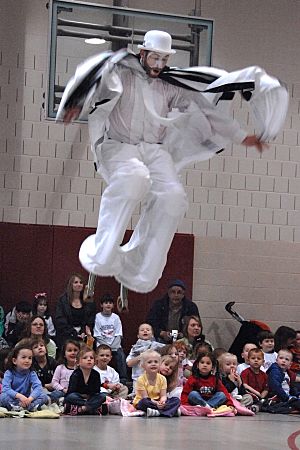
A circus, described as "one of the most brazen of entertainment forms", is a special type of theatrical performance, involving a variety of physical skills such as acrobatics and juggling and sometimes performing animals. Usually thought of as a travelling show performed in a big top, circus was first performed in permanent venues. Philip Astley is regarded as the founder of the modern circus in the second half of the 18th century and Jules Léotard is the French performer credited with developing the art of the trapeze, considered synonymous with circuses. Astley brought together performances that were generally familiar in traditional British fairs "at least since the beginning of the 17th century": "tumbling, rope-dancing, juggling, animal tricks and so on". It has been claimed that "there is no direct link between the Roman circus and the circus of modern times. ... Between the demise of the Roman 'circus' and the foundation of Astley's Amphitheatre in London some 1300 years later, the nearest thing to a circus ring was the rough circle formed by the curious onlookers who gathered around the itinerant tumbler or juggler on a village green."
Magic
The form of entertainment known as stage magic or conjuring and recognisable as performance, is based on traditions and texts of magical rites and dogmas that have been a part of most cultural traditions since ancient times. (References to magic, for example, can be found in the Bible, in Hermeticism, in Zoroastrianism, in the Kabbalistic tradition, in mysticism and in the sources of Freemasonry.)
Stage magic is performed for an audience in a variety of media and locations: on stage, on television, in the street, and live at parties or events. It is often combined with other forms of entertainment, such as comedy or music and showmanship is often an essential part of magic performances. Performance magic relies on deception, psychological manipulation, sleight of hand and other forms of trickery to give an audience the illusion that a performer can achieve the impossible. Audiences amazed at the stunt performances and escape acts of Harry Houdini, for example, regarded him as a magician.
Fantasy magicians have held an important place in literature for centuries, offering entertainment to millions of readers. Famous wizards such as Merlin in the Arthurian legends have been written about since the 5th and 6th centuries, while in the 21st century, the young wizard Harry Potter became a global entertainment phenomenon when the book series about him sold about 450 million copies (as at June 2011), making it the best-selling book series in history.
Street performance
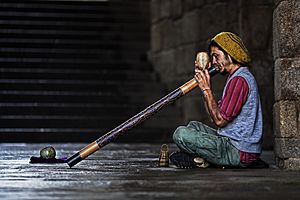
Street entertainment, street performance or "busking" are forms of performance that have been meeting the public's need for entertainment for centuries. It was "an integral aspect of London's life", for example, when the city in the early 19th century was "filled with spectacle and diversion". Minstrels or troubadours are part of the tradition. The art and practice of busking is still celebrated at annual busking festivals.
There are three basic forms of contemporary street performance. The first form is the "circle show". It tends to gather a crowd, usually has a distinct beginning and end, and is done in conjunction with street theatre, puppeteering, magicians, comedians, acrobats, jugglers and sometimes musicians. This type has the potential to be the most lucrative for the performer because there are likely to be more donations from larger audiences if they are entertained by the act. Good buskers control the crowd so patrons do not obstruct foot traffic. The second form, the walk-by act, has no distinct beginning or end. Typically, the busker provides an entertaining ambience, often with an unusual instrument, and the audience may not stop to watch or form a crowd. Sometimes a walk-by act spontaneously turns into a circle show. The third form, café busking, is performed mostly in restaurants, pubs, bars and cafés. This type of act occasionally uses public transport as a venue.
Parades
Parades are held for a range of purposes, often more than one. Whether their mood is sombre or festive, being public events that are designed to attract attention and activities that necessarily divert normal traffic, parades have a clear entertainment value to their audiences. Cavalcades and the modern variant, the motorcade, are examples of public processions. Some people watching the parade or procession may have made a special effort to attend, while others become part of the audience by happenstance. Whatever their mood or primary purpose, parades attract and entertain people who watch them pass by. Occasionally, a parade takes place in an improvised theatre space (such as the Trooping the Colour in 5) and tickets are sold to the physical audience while the global audience participates via broadcast.
One of the earliest forms of parade were "triumphs" – grand and sensational displays of foreign treasures and spoils, given by triumphant Roman generals to celebrate their victories. They presented conquered peoples and nations that exalted the prestige of the victor. "In the summer of 46 B.C.E. Julius Caesar chose to celebrate four triumphs held on different days extending for about one month." In Europe from the Middle Ages to the Baroque the Royal Entry celebrated the formal visit of the monarch to the city with a parade through elaborately decorated streets, passing various shows and displays. The annual Lord Mayor's Show in London is an example of a civic parade that has survived since medieval times.
Many religious festivals (especially those which incorporate processions, such as Holy Week processions or the Indian festival of Holi) have some entertainment appeal in addition to their serious purpose. Sometimes, religious rituals have been adapted or evolved into secular entertainments, or like the Festa del Redentore in Venice, have managed to grow in popularity while holding both secular and sacred purposes in balance. However, pilgrimages, such as the Christian pilgrimage of the Way of St. James, the Muslim Hajj and the Hindu Kumbh Mela, which may appear to the outsider as an entertaining parade or procession, are not intended as entertainment: they are instead about an individual's spiritual journey. Hence, the relationship between spectator and participant, unlike entertainments proper, is different.
Parades generally impress and delight, often by including unusual, colourful costumes. Sometimes they also commemorate or celebrate. Sometimes they have a serious purpose, such as when the context is military, when the intention is sometimes to intimidate; or religious, when the audience might participate or have a role to play. Even if a parade uses new technology and is some distance away, it is likely to have a strong appeal, draw the attention of onlookers and entertain them.
- Parades – 9 types, six cultures
-
2 Alfred Jacob Miller Cavalcade by the Snake Indians (1858–60)
-
4 Respectful crowd at motorcade in Canada (1945)
-
8 Ganesh Visarjan, Mumbai (2007)
Fireworks
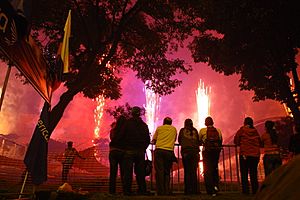
Fireworks are a part of many public entertainments and have retained an enduring popularity since they became a "crowning feature of elaborate celebrations" in the 17th century. First used in China, classical antiquity and Europe for military purposes, fireworks were most popular in the 18th century and high prices were paid for pyrotechnists, especially the skilled Italian ones, who were summoned to other countries to organise displays. Fire and water were important aspects of court spectacles because the displays "inspired by means of fire, sudden noise, smoke and general magnificence the sentiments thought fitting for the subject to entertain of his sovereign: awe fear and a vicarious sense of glory in his might. Birthdays, name-days, weddings and anniversaries provided the occasion for celebration." One of the most famous courtly uses of fireworks was one used to celebrate the end of the War of the Austrian Succession and while the fireworks themselves caused a fire, the accompanying Music for the Royal Fireworks written by Handel has been popular ever since. Aside from their contribution to entertainments related to military successes, courtly displays and personal celebrations, fireworks are also used as part of religious ceremony. For example, during the Indian Dashavatara Kala of Gomantaka "the temple deity is taken around in a procession with a lot of singing, dancing and display of fireworks".
The "fire, sudden noise and smoke" of fireworks is still a significant part of public celebration and entertainment. For example, fireworks were one of the primary forms of display chosen to celebrate the turn of the millennium around the world. As the clock struck midnight and 1999 became 2000, firework displays and open-air parties greeted the New Year as the time zones changed over to the next century. Fireworks, carefully planned and choreographed, were let off against the backdrop of many of the world's most famous buildings, including the Sydney Harbour Bridge, the Pyramids of Giza in Egypt, the Acropolis in Athens, Red Square in Moscow, Vatican City in Rome, the Brandenburg Gate in Berlin, the Eiffel Tower in Paris, and Elizabeth Tower in London.
Sport
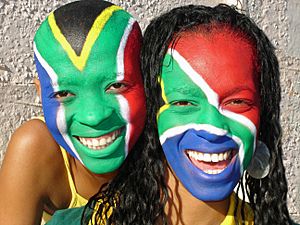
Sporting competitions have always provided entertainment for crowds. To distinguish the players from the audience, the latter are often known as spectators. Developments in stadium and auditorium design, as well as in recording and broadcast technology, have allowed off-site spectators to watch sport, with the result that the size of the audience has grown ever larger and spectator sport has become increasingly popular. Two of the most popular sports with global appeal are association football and cricket. Their ultimate international competitions, the World Cup and test cricket, are broadcast around the world. Beyond the very large numbers involved in playing these sports, they are notable for being a major source of entertainment for many millions of non-players worldwide. A comparable multi-stage, long-form sport with global appeal is the Tour de France, unusual in that it takes place outside of special stadia, being run instead in the countryside.
Aside from sports that have world-wide appeal and competitions, such as the Olympic Games, the entertainment value of a sport depends on the culture and country in which it is played. For example, in the United States, baseball and basketball games are popular forms of entertainment; in Bhutan, the national sport is archery; in New Zealand, it is rugby union; in Iran, it is freestyle wrestling. Japan's unique sumo wrestling contains ritual elements that derive from its long history. In some cases, such as the international running group Hash House Harriers, participants create a blend of sport and entertainment for themselves, largely independent of spectator involvement, where the social component is more important than the competitive.
The evolution of an activity into a sport and then an entertainment is also affected by the local climate and conditions. For example, the modern sport of surfing is associated with Hawaii and that of snow skiing probably evolved in Scandinavia. While these sports and the entertainment they offer to spectators have spread around the world, people in the two originating countries remain well known for their prowess. Sometimes the climate offers a chance to adapt another sport such as in the case of ice hockey—an important entertainment in Canada.
Fairs, expositions, shopping
Fairs and exhibitions have existed since ancient and medieval times, displaying wealth, innovations and objects for trade and offering specific entertainments as well as being places of entertainment in themselves. Whether in a medieval market or a small shop, "shopping always offered forms of exhilaration that took one away from the everyday". However, in the modern world, "merchandising has become entertainment: spinning signs, flashing signs, thumping music ... video screens, interactive computer kiosks, day care .. cafés".
By the 19th century, "expos" that encouraged arts, manufactures and commerce had become international. They were not only hugely popular but affected international ideas. For example, the 1878 Paris Exposition facilitated international cooperation about ideas, innovations and standards. From London 1851 to Paris 1900, "in excess of 200 million visitors had entered the turnstiles in London, Paris, Vienna, Philadelphia, Chicago and a myriad of smaller shows around the world." Since World War II "well over 500 million visits have been recorded through world expo turnstiles". As a form of spectacle and entertainment, expositions influenced "everything from architecture, to patterns of globalisation, to fundamental matters of human identity" and in the process established the close relationship between "fairs, the rise of department stores and art museums", the modern world of mass consumption and the entertainment industry.
- Entertainment in expositions and shops
-
Ball pit of the type provided for children's entertainment in shopping malls
Images for kids
-
Albert Bierstadt's The Campfire depicts storytelling, a universal form of entertainment
-
Mosaic showing Roman entertainments that would have been offered at the gladiatorial games, from the 1st century
-
Comedian Charlie Chaplin impersonating Hitler for comic effect in the satirical film The Great Dictator (1940)
-
The Boyhood of Raleigh by Sir John Everett Millais, oil on canvas, 1870. A seafarer tells the young Sir Walter Raleigh and his brother the story of what happened out at sea
-
Inauthentic castle in Disneyland amusement park
-
Magazine advertisement for crystal radio (1922)
-
1 Toy Coldstream Guards soldiers (19th century)
-
4 French scout (early 20th century)
-
6 Armenian boys play recorders
-
10 Toddler using a Tablet computer
-
1 A banquet scene from Ancient Egypt (from a wall painting in Thebes)
-
2 Byzantine banquet showing musicians and various musical instruments (1204–1453)
-
3 Jean Fouquet, Banquet for Charles V of France (1455–1460)
-
5 Bartholomeus van der Helst, Peace of Münster Amsterdam (1648)
-
8 The banquet hall in the palace of King Sahle Selassie painting from a photo, Ethiopia (1852)
-
9 Coronation banquet of George IV in Westminster Hall (1821)
-
10 Chinese banquet in a banquet hall given as a birthday celebration (2012)
-
2 Children's choir providing musical entertainment (Soviet Union, 1979)
-
3 Ensemble entertains travellers in the Paris Métro (2002)
-
5 Choir and orchestra in ecclesiastical setting (Italy, 2008)
-
Sofonisba Anguissola The Chess Game (1555) An intellectual game
-
Théophile Emmanuel Duverger (before 1901) Hopscotch A physical game
-
William Blake's painting of the pilgrims in The Canterbury Tales
-
Scheherazade telling her stories to King Shahryar in The Arabian Nights
-
Telling stories via Wayang golek puppets in Java
-
Tosa Mitsuoki illustrating her Tale of Genji
-
6 Outdoor theatre created from Edinburgh castle forecourt
-
7 Traditional stage for Japanese Noh theatre
-
9 Teatro Colón, a highly decorative, horseshoe theatre
-
3 Ballroom dancing (Czech Republic)
-
4 Belly dancer (Morocco)
-
5 Morris dancing (England)
-
6 Highland wedding (Scotland, 1780)
-
8 Fire Dragon dance for Chinese New Year
-
9 Bhangra dancers at the International Children's Festival
-
Trained monkey performing for an audience of children (1900–20)
-
Crowd watches Pharlap win the Melbourne Cup in Australia, 1930
-
Ticket showing electronic barcode (Valencia, 2005)
-
The Grand Foyer in the Palais Garnier, Paris (1875), influenced architecture around the world.
-
Maracanã, Rio de Janeiro, at inauguration (1950) the world's largest stadium by capacity
-
The O₂ entertainment precinct, London (2007)
-
Flamingo Entertainment Centre, Vantaa (2008), include variety of entertainment activities (e.g. a movie theater, spa, bowling, laser games, virtual experiences), 40 different stores and hotel
See also
 In Spanish: Entretenimiento para niños
In Spanish: Entretenimiento para niños


